The Clay Ripening Pilot investigates the technical and financial feasibility of transforming locally available dredge and salt marsh sediment into clay suitable for building dikes. The project represents one building block of Eems-Dollard 2050, a systemsbased program comprising various pilots aimed at restoring the estuary and enhancing livability in the surrounding communities.
The Clay Ripening Pilot utilizes 300,000 cubic meters of sediment to produce 70,000 cubic meters of clay. Two different ripening sites each host the sediment within 25 one-hectare basins. Over the course of three years, natural ripening processes reduce the water, salt, and organic content of the clay, aided by minimal reworking activities such as breaking the crust, periodically turning the clay, and submerging the basins in water. Data derived from a comprehensive monitoring campaign, conducted annually, inform the status of ripening and any necessary adaptations to the strategy. The project involves numerous public and private parties: Groningen Seaports and Het Groninger Landschap deliver the sediment to EcoShape. EcoShape heads a team of eight technical partners who collaborate on the ripening strategy. At the end of the process, part of the clay is delivered to Hunze en Aa’s for use in a dike strengthening project. The remaining clay is used in other beneficial applications, such as agriculture. Groningen Province and Rijkswaterstaat manage the project as part of Eems-Dollard 2050. The project is financed by the Wadden Fund and the Dutch National Flood Protection Program (HWBP), in addition to in-kind contributions from all partners involved.
The Clay Ripening Pilot seeks to formalize a simple, vernacular practice as a new standard for dike strengthening in the Netherlands. It leverages natural processes to turn unwanted local sediment into a valuable resource, in line with the principles of circularity and beneficial sediment use. It brings together a diverse consortium of partners, creating opportunities to align their objectives and needs. The Clay Ripening Pilot is a pilot with an obligation to deliver a product in addition to research. It exemplifies how open dialogue, understanding, determination, and commitment to a common vision can succeed despite many obstacles and advance innovation in practice.
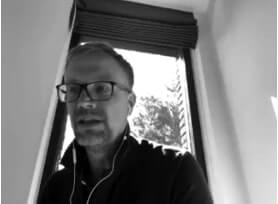
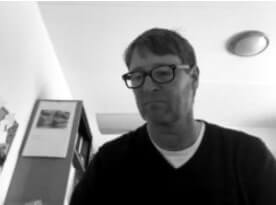
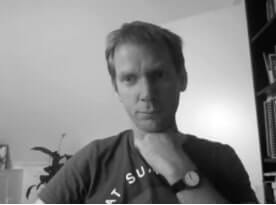

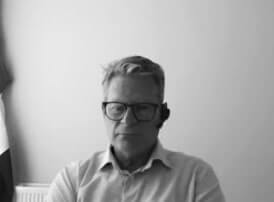
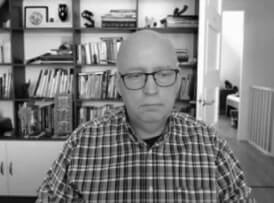
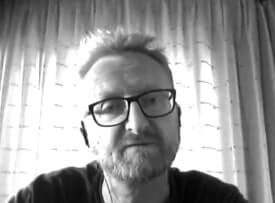
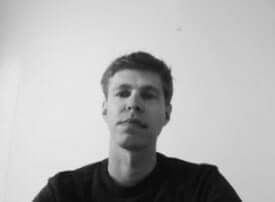
2. Erik Jolink – Project Manager, HWBP Wide Green Dike demonstration project, Hunze and Aa’s Water Board
3. Erik van Eekelen – Lead Environmental Engineer, Van Oord; Program Manager, EcoShape
4. Bart van de Kolk – Sustainability Coordinator, Groningen Seaports
5. Fred Haarman – Senior Project and Program Manager, Royal HaskoningDHV
6. Wim Sterk – Senior Advisor, Unit Water, Transport and Environment, Rijkswaterstaat
7. Herwin Prins – Project Manager, Het Groninger Landschap
8. Niels Nijborg – Water and Landscape Management Project Leader, Arcadis Nederland B.V.
Bart Koster: I remember when we first began to discuss the Clay Ripening Pilot, which involved the idea to transform locally available sediment into something vital to the Netherlands: clay to reinforce dikes. It sounds simple and logical, since sediment ripens into clay. Yet the project involves multiple organizations with different agendas, which makes it more complex and interesting.
Erik Jolink: As a water authority, we have a mandate to upgrade dikes to address climate change risks. However, we did not want to replace the Dollard dike revetment with a hardengineered asphalt dike, which was not appropriate for the context. The estuary was designated a rare bird habitat as part of Natura 2000, a network of protected areas across the EU. Instead, we conceived the idea of a “Wide Green Dike” of clay. The scale of this structure would mean we would need to truck in about 1.7 million cubic meters of clay to build 12.5 kilometers of protection. This demand led to a common-sense realization: the nearby estuary was full of unwanted sediment consisting of the same material as the clay on the landward side of the dike. We thought we could do something with the sediment, but we did not want to wait one hundred years, so we had to expedite the process.
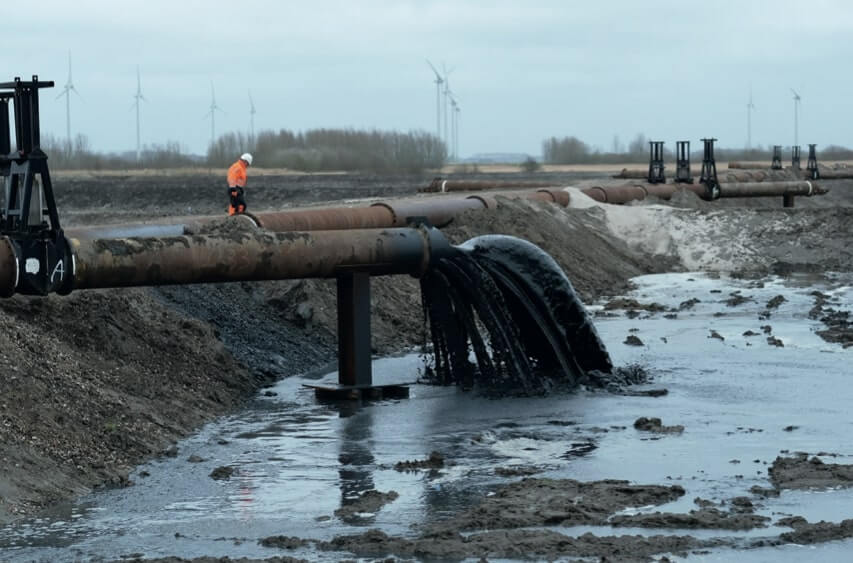
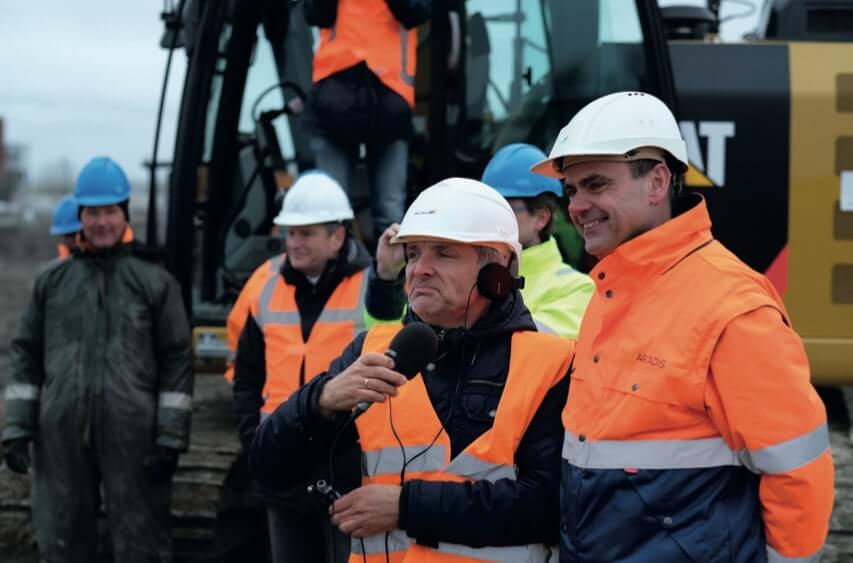
Erik van Eekelen: Dredging is a challenging business. Sediment accumulates naturally in unwanted places, and we spend money to relocate it, usually at quite a distance. However, sediment can also be a critical resource and a benefit to nature. Delivered to a specific location and transformed into a saleable product, it can even generate a circular economy.
Bart van de Kolk: For a long time, nature conservation organizations had been concerned with the status of the Eems-Dollard estuary. Many advocated to combine economic gains with ecological improvements by developing an economic use for the millions of tons of fine sediment removed from the estuary system. In 2013, a group of local organizations pledged to tackle the issue together. One year later, we were pitched the concept of sediment reuse for dike raising.
Erik Jolink: Rijkswaterstaat had long favored the reuse of dredged sediment as a sustainable building material. They were receptive when we pitched the Wide Green Dike at the kickoff congress of the Wadden Sea Dikes Cross-Project Survey. There I met Erik van Eekelen and learned that EcoShape had been working on this idea as well.
Erik van Eekelen: We proposed a small experiment. We were faced with the typical questions about process, lab selection, and clay application sites. We worked out that a trial should cover more than ten hectares, with hundreds of thousands of cubic meters of fine sediment. The whole room went silent, but it was clear that such an experiment was the only way to test the business case. Once we reached agreement, we were able to talk about the design, location, size, other variables, and the technologies needed. This led to a Clay Ripening Pilot with sediment from two locations. It was a pivotal moment.
“The Clay Ripening Pilot’s success stems from the seemingly obvious nature of the proposition, which requires little to no explanation.”
Erik Jolink / 3:56 p.m.
Fred Haarman: We conducted a social cost-benefit analysis in 2016 and identified potential applications for sediment reuse. We learned that a Clay Ripening Pilot could process around 40 percent of the total sediment removed from the estuary system, an estimate that still stands today. The implication is that about one million cubic meters per year should be processed in this way. These large numbers highlighted the potential significance of the project and also underlined the urgency of the experiment for our managers and the necessity of the work. It was a wonderful moment when the first sediment was brought into the depot in Delfzijl. The level of interest was remarkable, and rather surprising for a project of this type in the far north of the country. National television covered the event, as did the newspapers. After the launch, there was a stream of visitors, including twentyfive German representatives who came to see what the Dutch were doing with the sediment. It was obviously very unusual.
Erik Jolink: Simple projects make compelling stories. The Clay Ripening Pilot’s success stems from the seemingly obvious nature of the proposition, which requires little to no explanation.
Fred Haarman: Building with Nature, that is, leveraging natural processes to achieve desired results, is something that appeals to many people, including financiers and directors. This appeal is critical: we would not have succeeded without the Wadden Fund. The project’s simple yet compelling story and its circular, win-win proposition helped us to secure funding and alignment and generate enthusiasm.
Wim Sterk: We encountered the first obstacle early on, in the contract phase of the pilot. Developing a feasible procurement strategy was a delicate and complicated issue. Fortunately, Rijkswaterstaat, together with the Dutch Union of Water Authorities, was able to award the contract to EcoShape through an existing Building with Nature research covenant.
Erik Jolink: We seized the opportunity to keep EcoShape on board, given the research they already had underway.
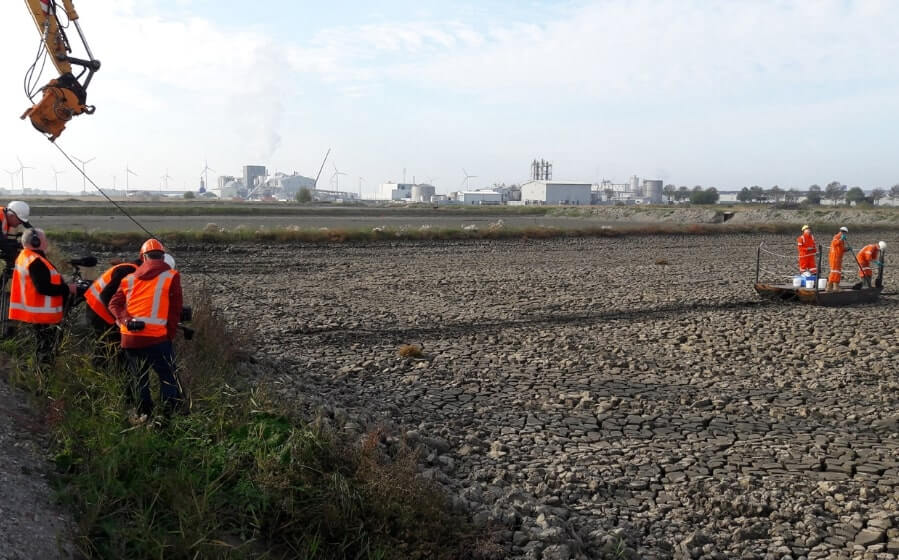
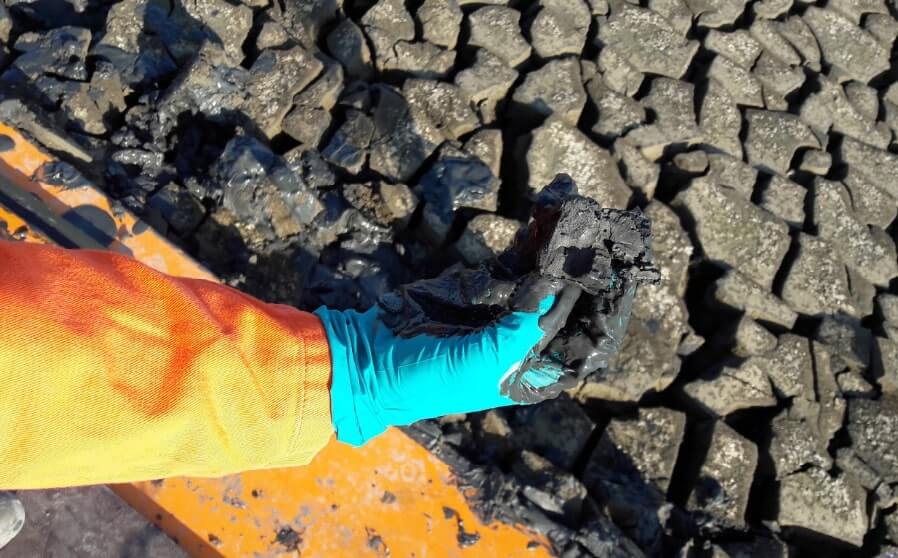
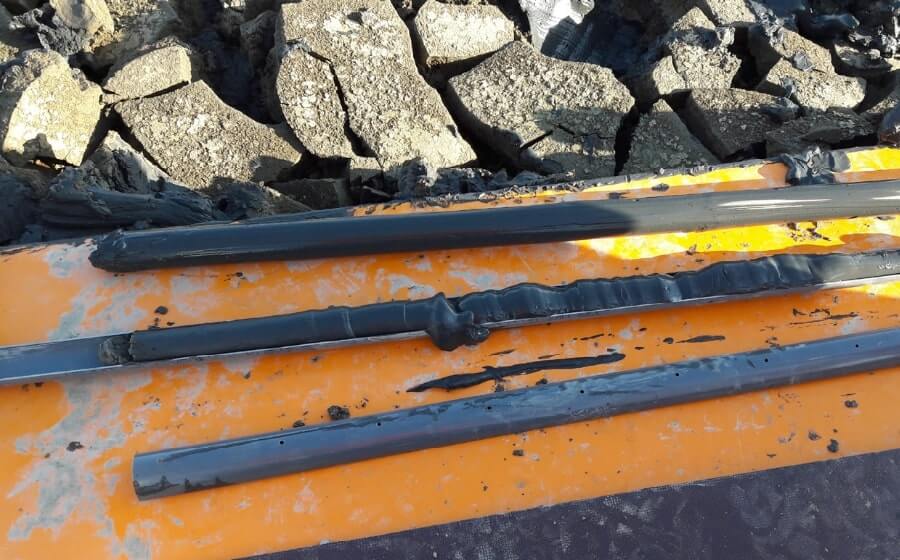
October 2018: First yearly sampling campaign in Delfzijl. The EcoShape team uses a simple barge to access the field and collect samples, as the clay is still too soft for access on foot.
Just one year after deposition, the clay remains fluid underneath its thirtycentimeter crust.
Fred Haarman: Between 2016 and 2017, we developed a memorandum of understanding to coordinate different interests, parties, and elements. There were many iterations, but we were able to align everyone’s needs because we understood exactly what we wanted to achieve. We established how all parties would collaborate, determined the schedule, and decided on a process if things went wrong. In a pilot program such as this, it is difficult to plan everything in advance and anticipate the true risks and their resolution. In retrospect, I think we succeeded because in times of challenge, we were able to fall back on that initial agreement.
Erik van Eekelen: It is vital for collaboration that all parties agree they are in it together, to establish trust, share objectives, and articulate what each is prepared to do to achieve them. We all trusted each other enough to do that.
Herwin Prins: As a nature organization, the project gave us the opportunity to fulfill a long-held ambition to dredge Slenk and the Breebaart polder. We had tried for ten years but were hindered by the lack of funding. Although there were numerous implementation challenges, we consider the project a great step forward. Through the Clay Ripening Pilot, we learned the importance of working from our own experience and letting others lead on the elements where they have special expertise.
Fred Haarman: The Clay Ripening Pilot has raised several questions that
not only make the process interesting but have important future implications. How can we apply the same technology to upgrade longer sections of dikes? What is the timeframe, the space required, and where can we find efficiencies? Everything we learn from the Clay Ripening Pilot informs the scaling-up process.
Erik van Eekelen: The Clay Ripening Pilot is an experiment, but it must also perform right away. The performance agreements are key. If it were a typical pilot project, failure could be an option. We would write the scientific reports outlining what went wrong. In this instance, the six partner organizations have to deliver according to their performance agreements. I think this double objective is critical to the success of the experiment.
Niels Nijborg: Each party has a specific interest, and the project involves several risks. There were many discussions of how to manage these risks and who was best placed to do so. Still, we never lost sight of the main goal: to transform sediment into clay for dikes.
For this large-scale experiment, EcoShape has collaborated with
a team of eight partners. Contractors and engineers work alongside ecology and sediment research experts. The interdisciplinary approach to the Clay Ripening Pilot ensures a stimulating process and creates remarkable team dynamics.
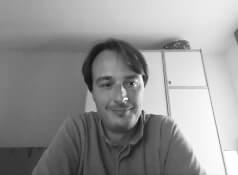
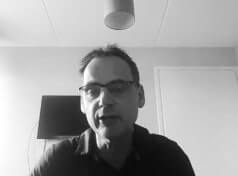
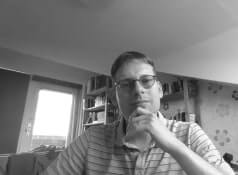
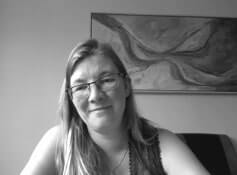
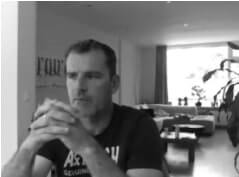
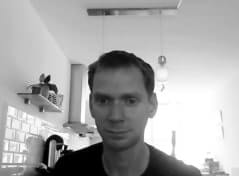
2. Jannes Boer
3. Wouter van der Star
4. Kelly Elschot
5. Hilko Timmer
6. Erik van Eekelen
Wouter van der Star: The project focus brought science and operations together in a highly complementary way. Fundamentally, we asked two questions. First, in considering the product: “How do you make enough good clay from Eems-Dollard sediment?” And second, examining the natural processes: “What processes enable the production of good clay, and how can we promote them?”
Luca Sittoni: The quality of collaboration in this pilot and in the Netherlands generally is remarkable. It may seem normal to this group, but it is not often the case for projects of this scale and complexity. By acknowledging the interests of various partners, we aim to link seemingly disparate problems and create better solutions. Bringing supply and demand together through collaboration is the heart of our work.
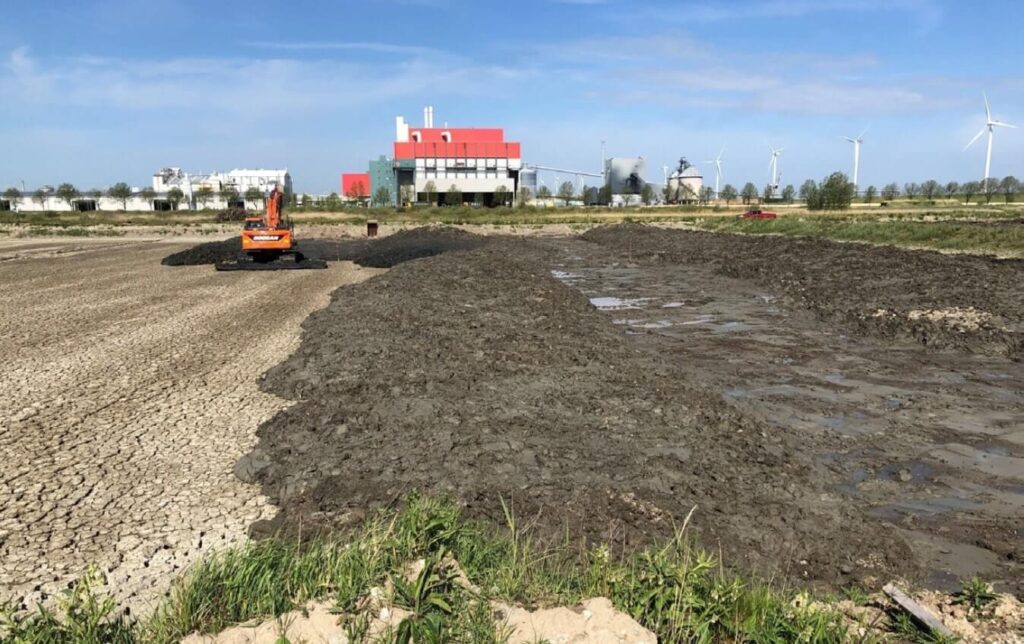
Wouter van der Star: I have been involved in many research projects, and the obligation to achieve a predefined physical result is very unusual. In the Clay Ripening Pilot, any change in the monitoring strategy affects scientific conclusions: it has consequences for the end product as well as the scientific interpretation. The result can be stressful, but there is a strong focus: how to make good clay and a good business case.
Kelly Elschot: The approach is characteristic of EcoShape projects. They are large-scale and ambitious, which means there is some uncertainty as to the outcome. Ecological processes take time, whereas projects have set deliverables. This can generate friction. At the Clay Ripening Pilot, I look forward to taking measurements so we can understand the impacts of the planting work. We started with liquid sediment, which formed a salty crust within six months. It was changing so fast that it was a challenge to sustain plants. Everything changed again after the winter.
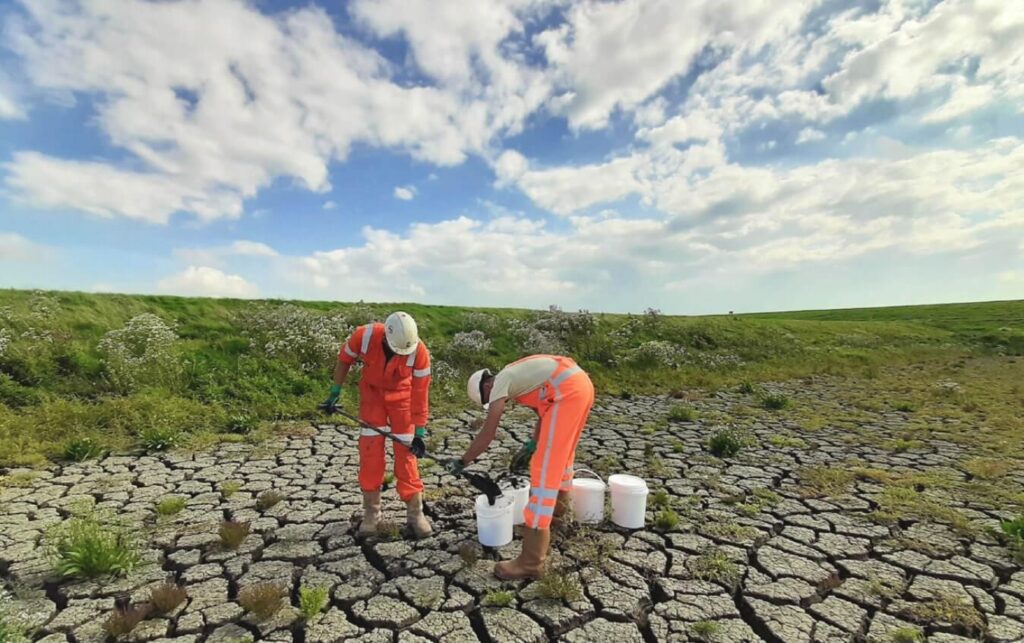
Hilko Timmer: The project’s dynamism was both enjoyable and challenging. In a typical design and construction project, the completed design is handed off to the contractor. Here, our research objectives required further adjustments during the implementation process. With a limited soil balance as a basis, we then focused on design criteria such as the dike height and wave impacts, and finally on the pressure pipelines.
Erik van Eekelen: It is not a technically complex project, but there is a lot involved. Funding limitations are a challenge given the needs to conduct research and analyze lessons learned. Research objectives are challenging for a contractor, who typically provides a service at a limited cost.
Jannes Boer: It is true: we construct a large pond in which we deposit sediment, and after a few years we harvest the clay. Nothing to it. As a project manager, however, the sheer number of organizations involved represents a challenge, even if the aggregated expertise makes the product that much better. Within the team, distinctions between firms vanished in no time, and we bonded into a single unit.
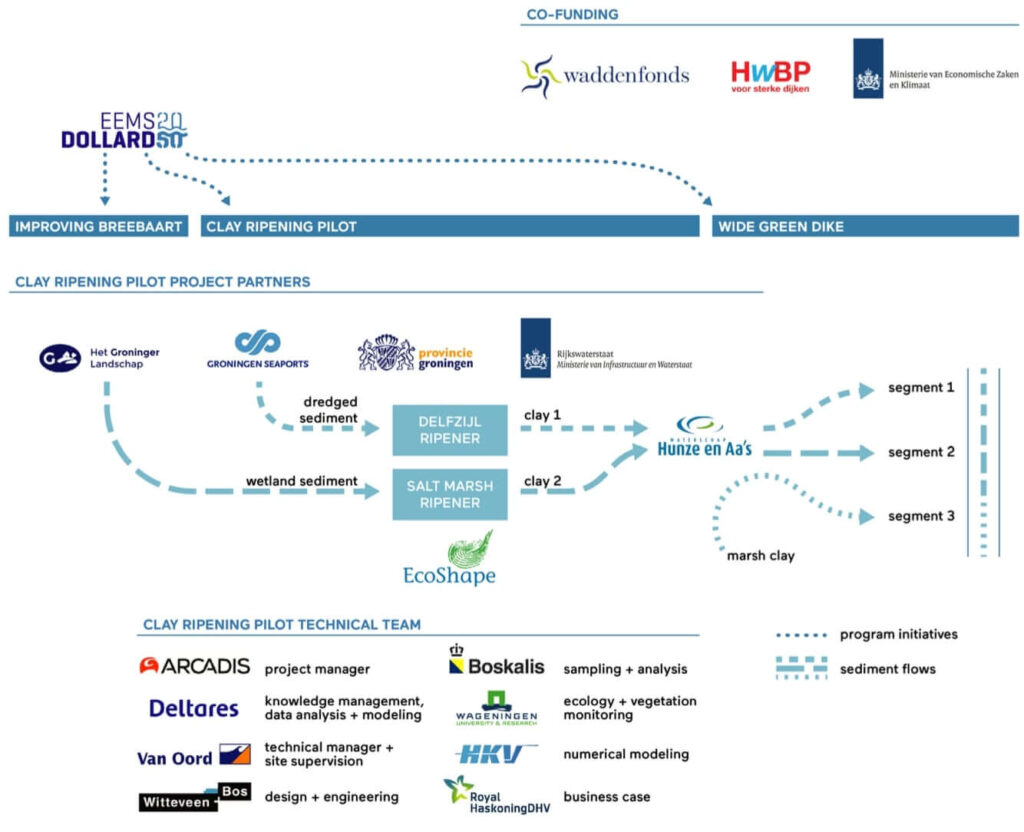
Clay Ripening Pilot team organization as related to the broader Eems-Dollard 2050 program.
The project is funded by the Wadden Fund and the Dutch National Flood Protection Program (HWBP), together with in-kind support from the Clay Ripenening Pilot project partners: the Dutch National Government, Groningen Province, Groningen Seaports, Hunze en Aa’s Water Board, and EcoShape.
The Clay Ripenening Pilot is linked to two other projects under the Eems-Dollard 2050 program: Improving Breebaart and the Wide Green Dike. Dredged sediment is provided by Groningen Seaports and Het Groninger Landscap and hydraulically transported to the Delzijl and Salt Marsh Ripeners. Here, natural processes of ripening, together with reworking activities, transform the dredged sediment into clay. EcoShape and its technical team members carry out the research and reworking activities.
The clay is subsequently deployed by the Hunze en Aa’s Water Board to construct two segments of the Wide Green Dike. Additional marsh clay is utilized in a third segment.
Luca Sittoni: EcoShape’s strength lies in fostering collaboration with numerous partners: researchers, contractors, engineering firms, and NGOs. The consortium has become known for convening all the experts, and all the points of view.
“The project focus brought science and operations together in a highly complementary way.”
Wouter van der Star / 5:12 p.m.
Hilko Timmer: We discussed the number and scale of the sections at length, considering the available soil. Above all, we tried to be practical. For example, there was a farmer who needed to access the dike for his cows. We were able to divide the test sections to maintain that access. The constraint in turn shaped the section sizes and thus the research program. Normally, a project begins with the team and client conceiving a “basis of design.” If we were designing a car, we could specify its green color, four wheels, engine capacity, and so on. In this case, we effectively answered the questions of how many wheels and what size engine during the design process.
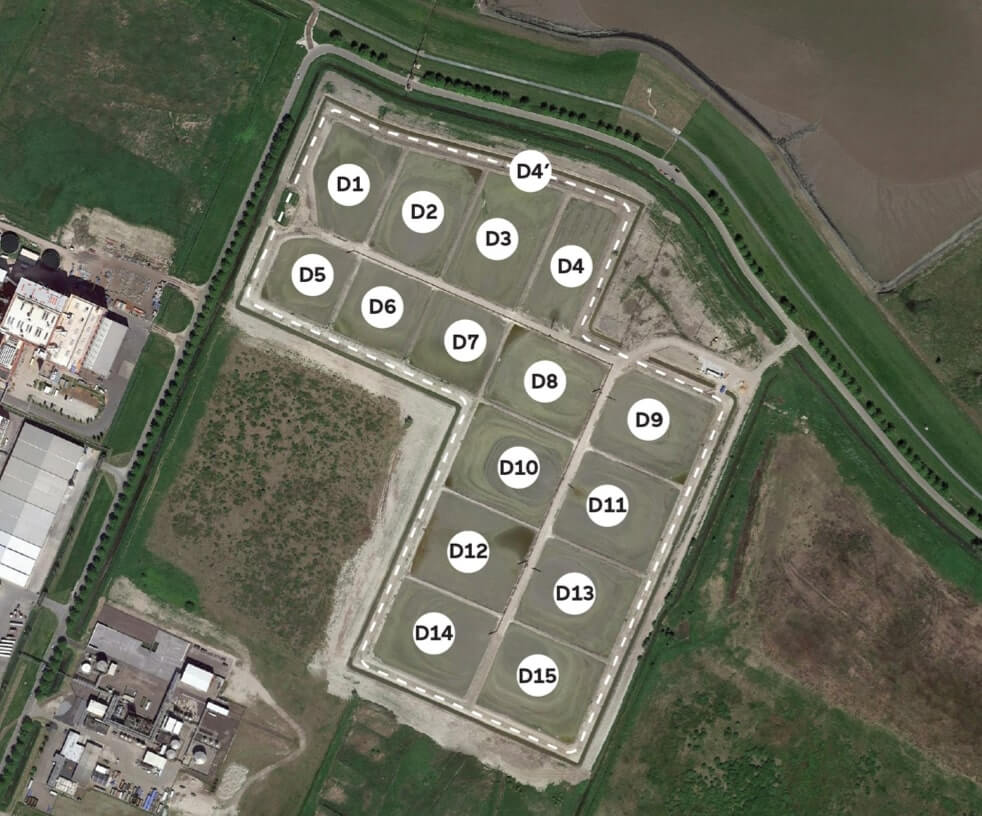
Wouter van der Star: The design sessions are very interesting because they bring together two groups of people who would not typically interact. Science projects usually contemplate areas of square meters; here, we were asked to think in hectares! The consequences of our decisions are much greater, for instance, with regard to the monitoring. In Delfzijl, the site contains both clay and sand dikes. While the combination does not detract from constructability, the sand dikes have much more efficient drainage, causing the ripening ponds to dry out more quickly. This is challenging for the research because we designed identical sections suitable for replication without accounting for material differences in the dikes. The sediment itself also differs between the two locations. We were able to fill the Delfzijl Ripener with fine, homogeneous material across all the sections, which is fantastic from a scientific point of view. In the Salt Marsh Ripener, there is segregation and diversity, which makes replication an issue. But Marcel van den Heuvel (the contractor) always reminds me that conditions vary in practice, which makes variation useful to simulate reality. What is helpful for science is more difficult to translate to (future) practice.
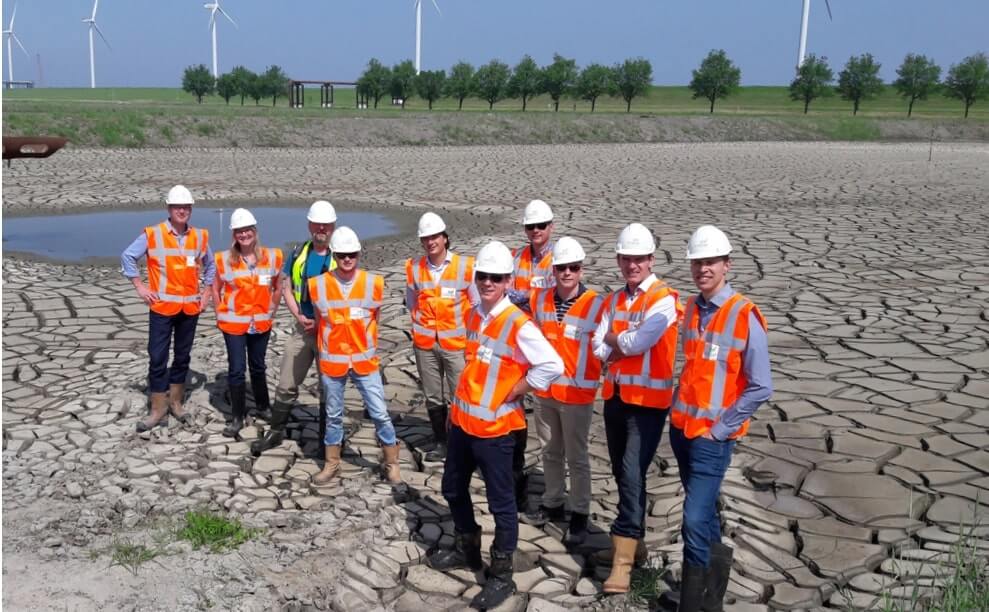
Kelly Elschot: Projects such as this provide the opportunity to conduct experiments on a scale that is rarely possible, and this uniqueness allows us to publish scientific studies. We must design the experiment so that the resulting data can be statistically analyzed for peer-reviewed publications.
Wouter van der Star: Sediment from a marine system is salty and contains significant amounts of organic matter. Moreover, most of its content is water. The first step in the Clay Ripening Pilot is to remove that water. When the sediment was deposited it consolidated slightly. The sediment particles excrete water. Although the water evaporates through sun exposure, the salt remains. The salt must be removed via rain or artificial spraying. Even though we understood the mechanisms, we could not anticipate which processes would predominate or what could be achieved. It was extremely helpful to have systems in place to coordinate treatment and monitoring as processes evolved. We established a group of experts, with members from the research institutions, the engineering firms, the contractors, and the Rijkswaterstaat. The group met regularly on site to avoid miscommunication. For instance, when an ecologist like Kelly refers to the salt crust, she may be referring to the top ten centimeters. For me, the crust could mean a half meter. Joint observation is critical. Last year we faced severalLuca Sittoni: EcoShape’s strength lies challenges: neither the salt content nor the organic matter content decreased as much as it had previously. The discussions among our group of experts grew in intensity. There were disagreements about underlying mechanisms. In the end, we managed to arrive at a shared perspective and agree on research and processing approaches. I was happy about that.
“The consortium has become known for convening all the experts, and all the points of view.”
Luca Sittoni / 5:27 p.m.
Erik van Eekelen: The language issue was evident from the project kickoff, with EcoShape’s consortium of experts and representatives from the six project partners. We visited the dike where the Salt Marsh Ripener was planned. Each person had a distinct way of viewing the site. The ecologists sighted some birds and plants and nearly left our company to investigate further. It was clear that the water authority officials were thinking about the flood risk management implications after construction. Someone else remarked on the need to relocate cattle. Contractors like myself were interested in the workability of the subsoil. Still, we agreed on the site for the experiment, and that is what bonded us as a team. This bond persists not only among the technical group members but also with the project partners, despite the many difficulties that followed: the sand martins, the badgers, the archaeological sites, and the inflexibility of our permits.
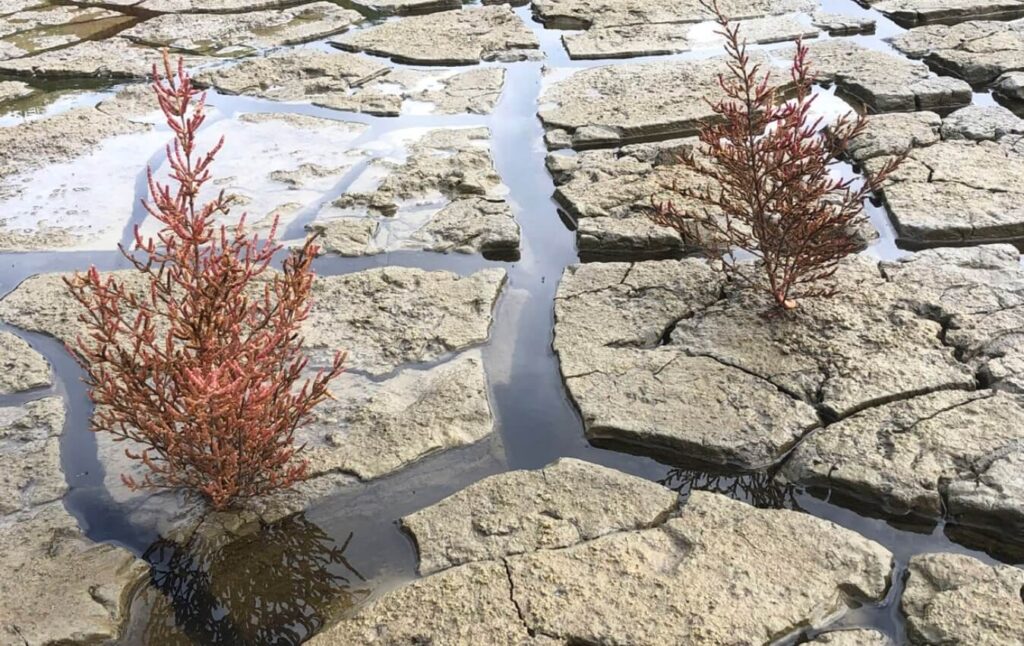
Wouter van der Star: Early on, people thought the Clay Ripening Pilot was a nice project but also a hassle, with too many risks and stakeholders. Along the way, however, this assessment changed: we began to receive requests for abstracts, to conduct additional research, and appeals to reserve the clay for later projects. It was fantastic. The Clay Ripening Pilot undoubtedly pays for itself in terms of research. With the support of EcoShape and others, we began to measure greenhouse gas emissions from the clay, a topic that is now increasingly relevant. The project has built a reputation, which is wonderful.
Kelly Elschot: The first time I went to the Delfzijl site with the team marked a significant change from my typical line of work. I had to put on a yellow helmet, an orange jacket, and big boots with steel toecaps. A big sign read: “Beware, quicksand.” It was a far cry from my work in salt marshes with plants and flowers. In fact, the difference is what makes this project so enjoyable. On a site visit last year, I counted forty pheasants. We have deer, badgers, and sand martins, really all kinds of plants and animals.
